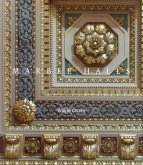The town hall as a building type has a history going
back to ancient Greece and Rome. During the Middle
Ages, however, construction of such buildings was
largely unknown in Europe until the rise of the
European communes in the 12th and 13th centuries.
This volume examines the development of town halls
in three key north German cities of the Hanseatic
League, Lübeck, Bremen and Lüneburg, from their
beginnings up to the outbreak of the Thirty-Years
War. It will show that, though buildings of this
kind represented important symbols of communal civic
pride, the town halls of these German communities,
and many others like them, were relatively modest
structures at first, developing gradually over a
period of centuries, through enlargement or
rebuilding, into grand palatial monuments. Their
architectural transformation reflects not only the
increased wealth and social pretension of the urban
middle classes, but theevolution of civic pride
itself, what the citizenry of the Hanseatic
communes considered worthy of pride, and how these
people viewed themselves in relation to their
aristocratic erstwhile rulers.
back to ancient Greece and Rome. During the Middle
Ages, however, construction of such buildings was
largely unknown in Europe until the rise of the
European communes in the 12th and 13th centuries.
This volume examines the development of town halls
in three key north German cities of the Hanseatic
League, Lübeck, Bremen and Lüneburg, from their
beginnings up to the outbreak of the Thirty-Years
War. It will show that, though buildings of this
kind represented important symbols of communal civic
pride, the town halls of these German communities,
and many others like them, were relatively modest
structures at first, developing gradually over a
period of centuries, through enlargement or
rebuilding, into grand palatial monuments. Their
architectural transformation reflects not only the
increased wealth and social pretension of the urban
middle classes, but theevolution of civic pride
itself, what the citizenry of the Hanseatic
communes considered worthy of pride, and how these
people viewed themselves in relation to their
aristocratic erstwhile rulers.








